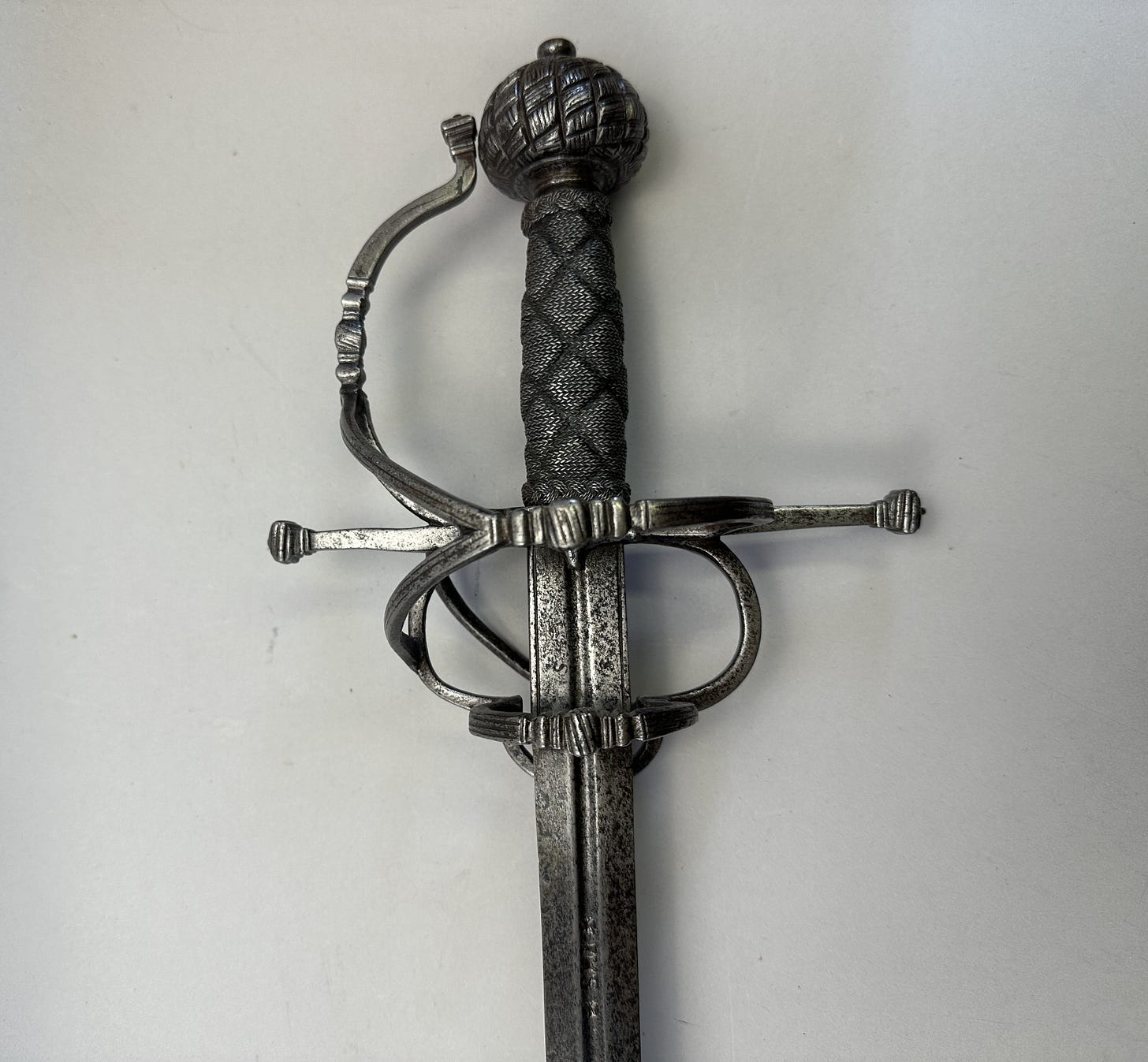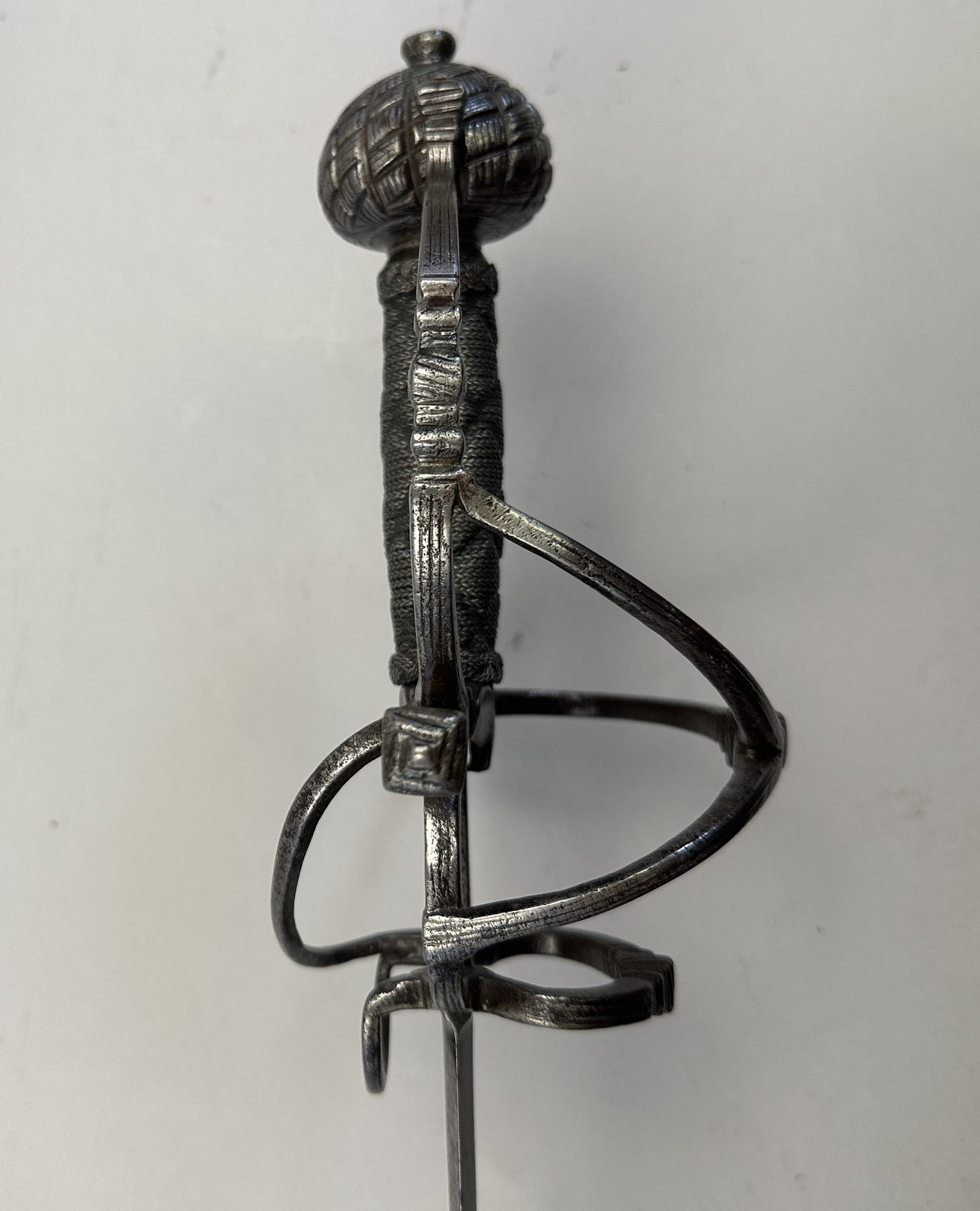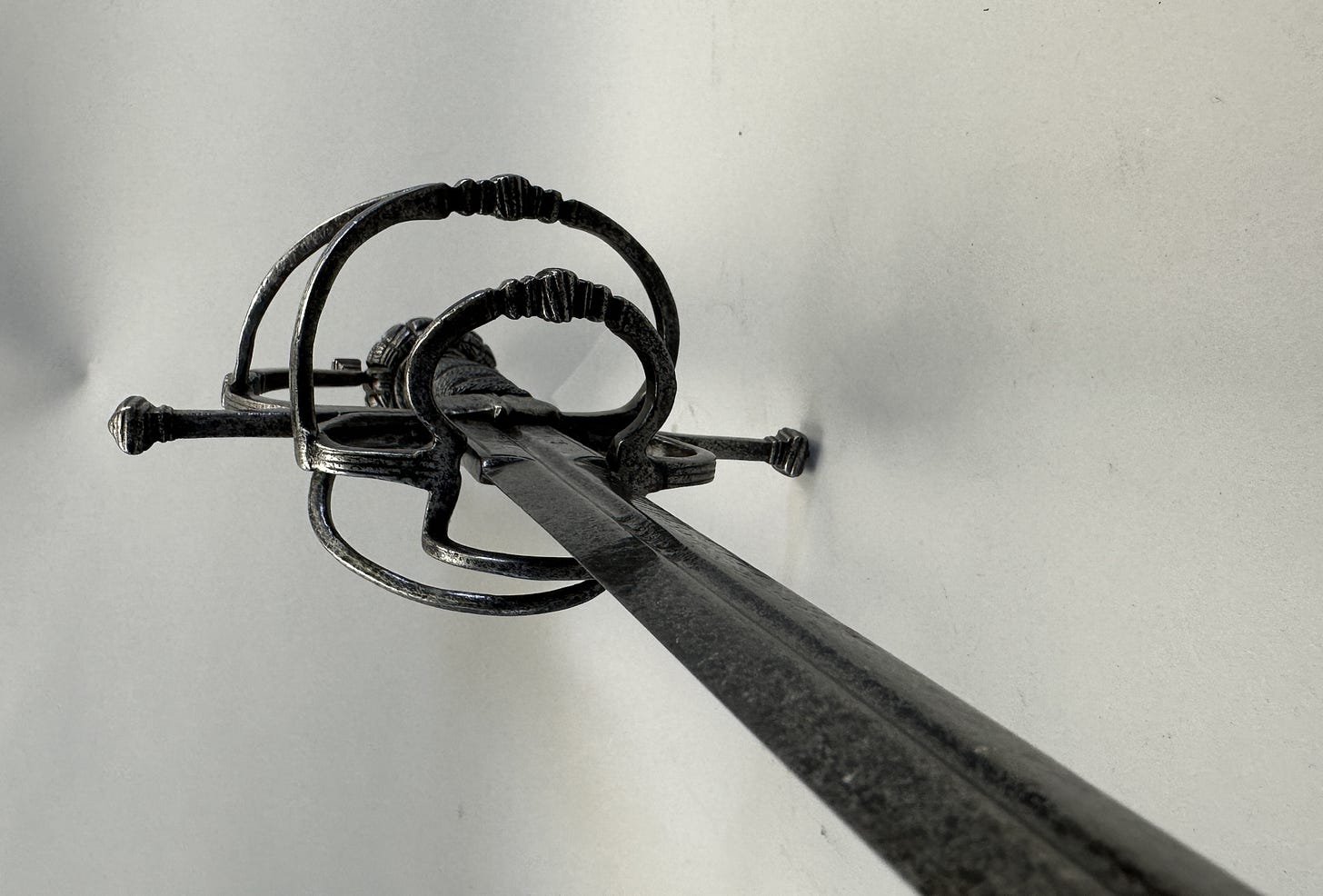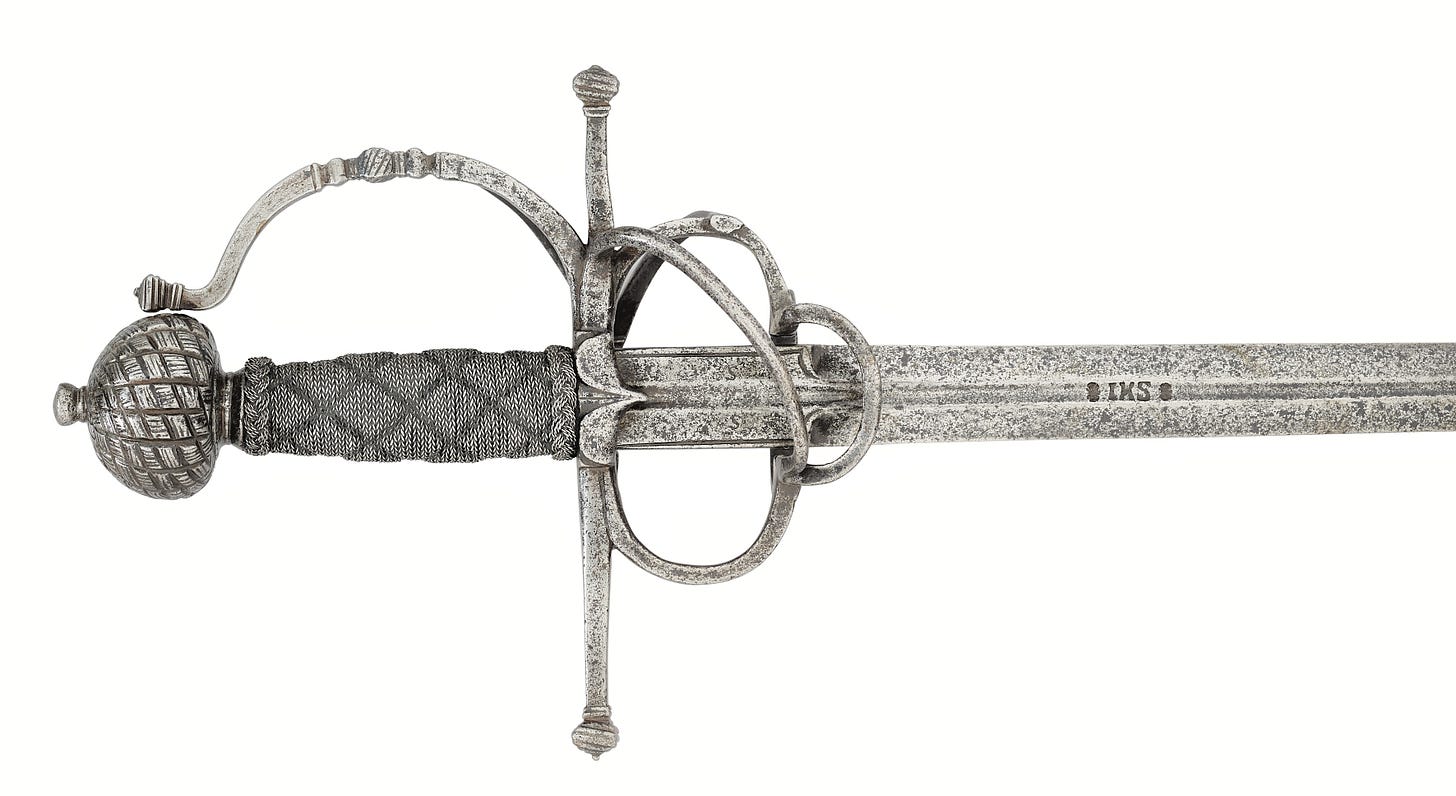When I prepared the post about the “Swept-hilt sideswords with a more unique design”, I wanted to include the Spanish Rapier from the Oakeshott Collection. It is an item used by Arms & Armor Inc. to present in-period items to the public.
In particular, I enjoy the video made by Arms & Armor that highlights how sweeps were forged on a rapier. And I for one, trust them to know how to make rapiers.
In general, this rapier, which wouldn’t feel bad being called a sidesword, is an item that is well known to the public, with a good amount of details being listed on the Oakeshott Institute’s Patreon page. But one doesn’t need to make a trip to the Oakeshott Institute to have a better look, as they have made a 3D model (Sketchfab 3D model) allowing us to view this piece from all angles. I’ll present next the details of the rapier.
Oakeshott Collection Spanish Rapier
This Spanish rapier was made in 1596 in Toledo by Alonzo de Sahagun, as inferred from the markings of the blade, “Alonzo de Sahagun Me Fecit” on one side, and “En Toledo MXD CVI” on the opposite.
The Oakeshott Collection states that the hilt is most likely 40 or 50 years older than the current blade, and of a quality indicating the relatively high status of the owner. The grip is the original wood, and would have been bound in wire, now missing. The hilt has traces of gold in recesses, most obvious in the pommel.
The total length is 118.7cm and the weight is 1010g. The blade length is 101cm, with 99cm of it being in front of the side-port. The 5.6mm thick blade has a width of 3cm. The grip length is given to be 9cm. Rarely given, but always of importance, the centre of mass is found at 3.175cm from the crossguard.
Rare Italian Rapier from Olympia Auctions
The rapier is stated to be Italian c.1540, with a double-edged blade of flattened-diamond section, stamped with the sacred trigram ‘IHS’ between two decorative marks within a short fuller on each face. The total length is given as 102.0cm.
As I found from looking at Bolognese sideswords, most blades were under 3.5cm wide, closer to 3.2cm at the widest point. If the separation between a rapier and a sidesword is mainly due to the fencing system, and Camillo Agrippa (died 1595) is the line in the sand, we see that these two pieces fall at the transition of fencing styles (with the Spanish Rapier being made in 1596).
The part that I find intriguing is the style of the hilt, which is basically identical for the two pieces. In particular, the sweep that comes from the crossguard to connect to the finger ring on the outside of the hand, does so at a sharp angle and at an unusual place (half-way through the finger ring). Most such hilt arrangements have the sweep terminate at the base of the side-port and the finger ring.
Last, let’s stop for a moment and admire the quillon block and the beautiful decoration that allows for your thump to rest on. A good case of form and function.

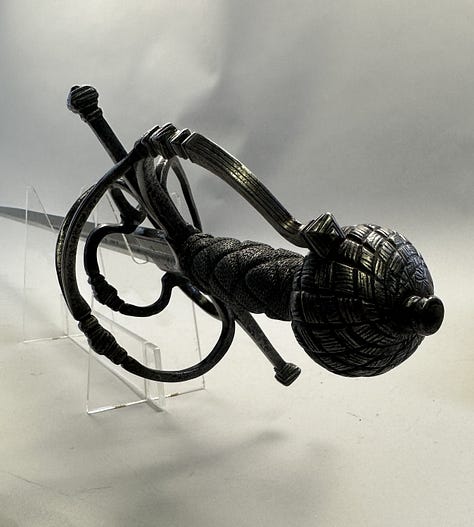
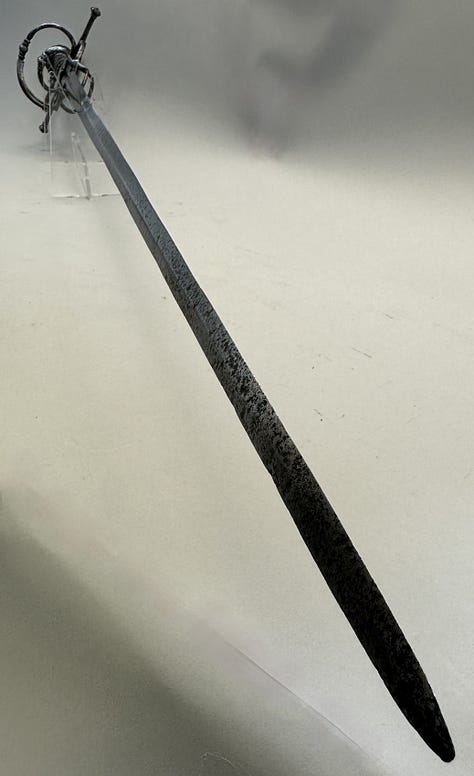
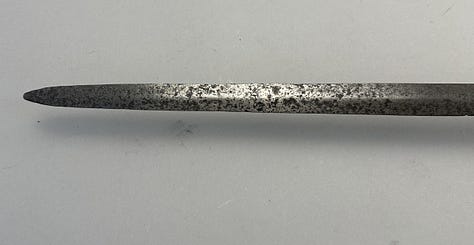


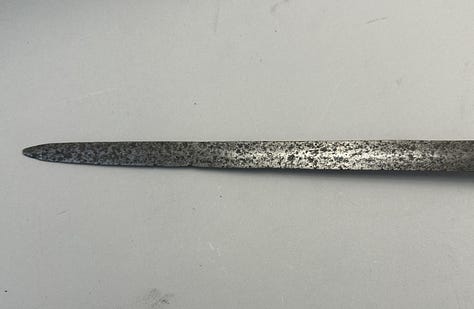
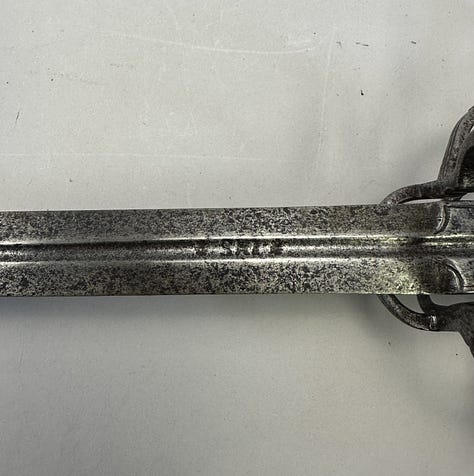
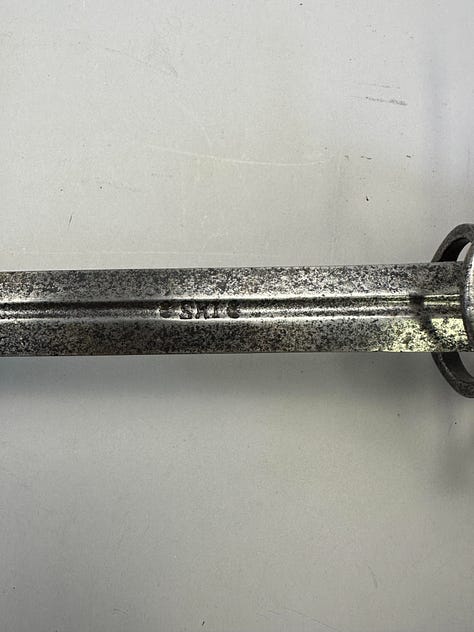
While I was preparing this post, Matt Easton from Schola Gladiatoria, has listed a presentation video of this piece. Have a look to see how it interacts with the hand. Such a beautiful piece!








